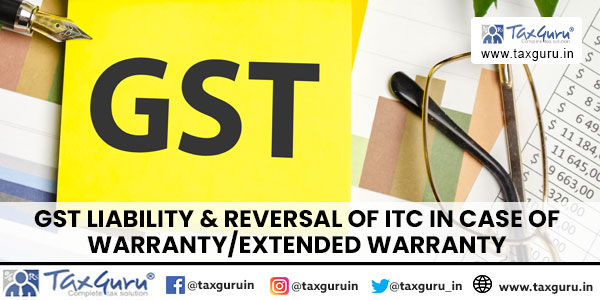Case Law Details
In the facts of the present case, the assessee had paid CENVAT on purchase of raw material which was deposited in its PLA account for claiming the benefit of set off against the excise duty payable on the manufactured items i.e. branded yearn. The assessee was paying higher rate of excise duty on the raw material purchased by it as against the rate of excise duty applicable on the manufactured items, consequently credit of excise duty was available with the assessee. The said excise duty paid from year to year was not claimed as an expenditure but was carried forward from year to year to be adjusted against the excise duty payable by the assessee on its manufactured items. However, during the year under consideration the assessee closed down its manufacturing unit and consequently the benefit of the CENVAT credit remained unadjusted. Once the manufacturing unit of the assessee is closed down, admittedly the benefit of CENVAT credit not availed of against the excise duty payable on manufactured items, cannot be utilized by the assessee and the said write off of CENVA T credit, is allowable as an expenditure in the year under consideration on the closure of the business. The write off of CENVAT credit by the assessee in its books of account is thus allowable as business expenditure under the provisions of section 37(1) of the Act relatable to the year, in which the manufacturing activities are closed down by the assessee. Accordingly, we direct the Assessing Officer to allow the claim of the assessee in respect of write off of CENVAT credit.
ITAT “ D ” BENCH, AHMEDABAD
BEFORE SHRI MUKUL Kr.SHRAWAT, JUDICIAL MEMBER AND
SHRI T.R. MEENA, ACCOUNTANT MEMBER
I.T.A. No. 1936/Ahd/2010
(Assessment Year : 2006-07)
ACIT Vs. M/s.Rangoli Industries Pvt.Ltd.
Date of Hearing : 07/01/2013
Date of Pronouncement: 11/1/13
O R D E R
PER SHRI MUKUL Kr. SHRAWAT, JUDICIAL MEMBER :
This is an appeal filed by the Revenue arising from the order of Ld. CIT(A)-IV, Surat dated 22.02.2010 passed for A.Y. 2006-07 and the ground raised is as follows:-
1. On the facts and in the circumstances of the case and in Law, the Ld. CIT(A)-IV, Surat has erred in allowing the excise duty written-off of Rs.65,24,121/-, disallowed by the AO treating the same as wrong claim.
2. Facts in brief as emerged from the corresponding assessment order passed u/s.143(3) r.w.s. 147 dated 22.12.2009 were that the assessee company is following the ‘Mercantile” system of accounting. It was noted by the Assessing Officer that for the year under consideration an amount of Rs. 65,24,121/- was written off by debiting the profit & loss account pertaining to Excise Duty. According to him, Government had declared the scheme wherein the assessee has been given an option to continue with the present rate of Excise Duty or to avail a route of exemption. After going through the submissions of the assessee, the Assessing Officer was not convinced and held that there was no evidence from the Excise Department through which the assessee could establish that the assessee was entitled to write off the amount in the year under consideration. When the matter was carried before the first appellate authority, the Learned CIT(Appeals) has allowed the claim of the assessee by observing as under:-
“1. have considered the findings of the AO and the submissions made by the appellant. From the facts of the case, it is evident that the appellant has opted for the exemption route without availing Cenvat Credit and therefore, unutilized Cenvat Credit of Rs.60,24,121/- as availed on the inputs, was written off in the regular books of accounts by the assessee which is evident from RG-23A Part-II register as produced before the AO. The fact that the CENVAT Credit is pertaining to the inputs and that the purchase cost of the input has been debited net of CENVAT credit in the P&L account is not under dispute at all. Accordingly, I am inclined to agree with the assessee that the Cenvat Credit attributable to inputs remaining un-utilised on account of exemption of excise duty on the finished goods is allowable revenue expenditure since, the cost of the inputs i.e. the raw materials has been debited in the P & L account net off the Cenvat claim. Further, CENVAT credit / Excise duty on inputs has been written off in the year under consideration, is not capital in nature or a personal expenditure but is in respect of the raw materials and thus, the claim of the appellant is undoubtedly wholly and exclusively for the purpose of its business pertaining to the year under consideration and hence, fully satisfies the conditions as laid down in section 37 of the IT Act. The argument of the AO that the impugned deduction is allowable against the future expenses has no force since the assessee has already surrendered its license under the Excise Act and opted for the exemption route and hence, there is no question of setting off the said expenditure in future. Further, the same view has also been taken in the cases of ACIT Vs. Naffar Chandra Jute Mills Ltd. (2004) 90 TTJ (Cal) 934, Honda Seil Power Products Ltd. Vs. DCIT (2000) 69 TTJ (Del) 97 and DCIT Vs. M/s.Jay Laxmi Mart Pvt.Ltd. in ITA No.2 64/A hd/2007 and thus the appellant’s case is covered by these decisions.”
3. From the side of the Revenue, ld.Sr.DR Mr.T.Shankar appeared and placed reliance on the findings of the A.O. On the other hand, from the side of the respondent- assessee, ld.AR Mr.Mehul R.Shah appeared and placed reliance on the following cases:-
“7. We have heard the rival contentions and perused the record. The issue arising in the present appeal is in respect of the deduction claimed on account of CENVAT amounting to Rs.35,94,577. The assessee was engaged in the business of manufacturing and trading of yarn and fibre. The yarn manufactured by the assessee was an excisable item. The assessee was paying excise duty on the raw material purchased i.e. acrylic yarn/fiber and polyester yarn/fiber. In turn, assessee was liable to pay duty on its manufactured items. The rate of excise duty payable on the raw material was higher and the assessee was depositing the excise duty in PLA account which in turn was adjustable against the excise duty payable on the finished products. The excise duty payable on the finished products was on the lower side and consequently over the period of years the assessee had credit of excise duty resulting in accumulation of CENVAT.”
“10. Various tests have been laid down by various High Courts and the Apex Court in relation to the allow ability of expenditure under section 37(1) of the Act while computing the income from profits and gains of business or profession. In the facts of the present case, the assessee had paid CENVAT on purchase of raw material which was deposited in its PLA account for claiming the benefit of set off against the excise duty payable on the manufactured items i.e. branded yearn. The assessee was paying higher rate of excise duty on the raw material purchased by it as against the rate of excise duty applicable on the manufactured items, consequently credit of excise duty was available with the assessee. The said excise duty paid from year to year was not claimed as an expenditure but was carried forward from year to year to be adjusted against the excise duty payable by the assessee on its manufactured items. However, during the year under consideration the assessee closed down its manufacturing unit and consequently the benefit of the CENVAT credit remained unadjusted. Once the manufacturing unit of the assessee is closed down, admittedly the benefit of CENVAT credit not availed of against the excise duty payable on manufactured items, cannot be utilized by the assessee and the said write off of CENVA T credit, is allowable as an expenditure in the year under consideration on the closure of the business. The write off of CENVAT credit by the assessee in its books of account is thus allowable as business expenditure under the provisions of section 37(1) of the Act relatable to the year, in which the manufacturing activities are closed down by the assessee. Accordingly, we direct the Assessing Officer to allow the claim of the assessee in respect of write off of CENVAT credit of Rs. 35,94,577/-. Ground No.1 raised by the assessee is thus allowed.”
4.1. We have also noted that Respected Coordinate Bench “A” Ahmedabad in the case of Girdhar Fibres Pvt.Ltd. (supra) has also opined as under:-
“9. We heard both the sides. Before us, Form E.R.1, i.e. Return of Excisable goods and availment of CENVAT credit has been placed. The explanation of the assessee was that the impugned two amounts were part of the duty which was paid by the assessee at the time of purchase of raw-material, however, the assessee had maintained exclusive system of accounting, therefore the duty paid was not debited as a part of the purchases but a separate account was maintained and carried to the balance-sheet. The AED and NCCD were applicable on POY, i.e. raw-material. When the finished goods, i.e. texturised yarn is manufactured, the excise is levied in the form of basic duty. The assessee has adopted exclusive method of accounting, therefore debited the net purchases and those were separately recorded in the books of accounts. We find force in this argument of the assessee because while maintaining the exclusive method of accounting the assessee had a choice to increase the value of the purchases in respect of the duty paid in the form of AED & NCCD. In other words, an expenditure was incurred but that expenditure could not be adjusted against the CENVAT Rules because on the finished goods, i.e. texturised yarn only the basic duty is leviable. We, therefore, hold that the amount which is now written off being part of the business expenditure, hence allowable under the provisions of the Act. In the result, we hereby reverse the findings of the authorities below and allow the ground raised by the Assessee.”
5. In the light of the above decisions, once on identical facts, a view has already been taken in favor of the assessee on this issue, therefore respectfully following that view, we hereby hold that ld.CIT(A) has rightly allowed the claim. In the result, ground raised by the Revenue is hereby dismissed.
6. As a result, Revenue’s appeal is dismissed.
























